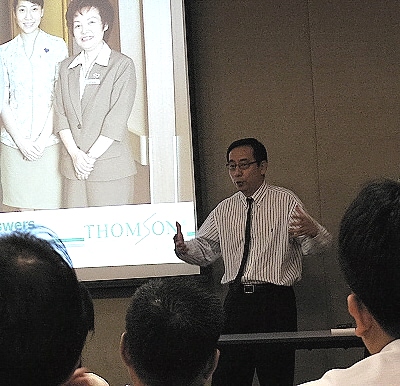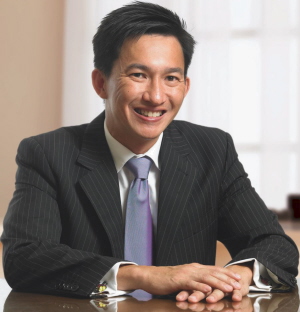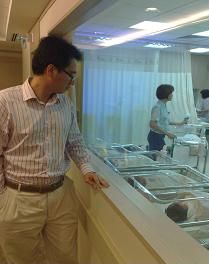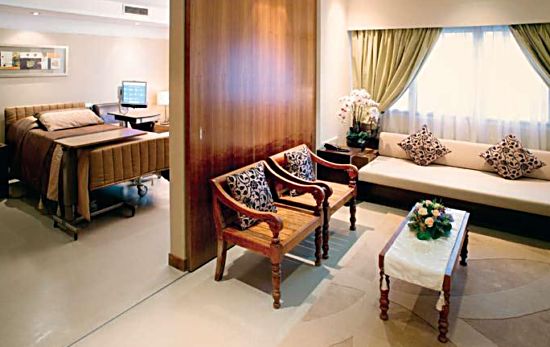 Thomson suite: Room 526. Photo courtesy of Thomson Medical
Thomson suite: Room 526. Photo courtesy of Thomson Medical
Many celebrities have given birth at the hospital, including Mediacorp actresses Zoe Tay, Pan Ling Ling, and Evelyn Tan.
“This is not a sick hospital,” stresses Mr Allan Yeo, group chief executive of Thomson Medical Centre Limited. “Here, we celebrate life. You could say we are a ‘resort hospital’. We want an atmosphere where people feel relaxed.”
Single rooms with flat screen television sets and even a bedside terminal which allows patients to surf the internet, read newspapers, play games and do online shopping are some of the features in the premium suites located at Thomson Medical’s Level 6.
Thomson Medical has indeed become a household name not only for its high quality service and amenities, but also for the vision that it represents.
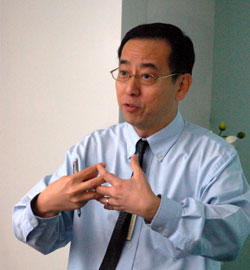
Allan Yeo, CEO, Thomson Medical. Photo by Sim Kih
Healthy Profits
The hospital’s recently announced results for the third quarter of 2009 (3Q09) were very positive despite the recession. Revenue for the third quarter increased 10.8 per cent to $17.4 million while net profits jumped 17.1 per cent to $3.4 million. Thomson Medical’s year-to-date earnings rose 9.0 per cent to $9.3 million, up from $8.5 million previously.
In 2008, despite higher operating expenses and the temporary closure of an inpatient ward for renovation, the company’s financial year 2008 (FY08) net profit after tax rose 17.4 per cent to $11.2 million on the back of a 15.1 per cent growth in revenue to $60.3 million.
Although the birth rate has generally gone down, deliveries at Thomson Medical have risen to 700 to 800 per month, which is by far the highest number of Singapore private deliveries. Even the onset of the H1N1 virus has not made much of an impact. Thomson Medical’s staff has taken steps to “ringfence” the wards. If patients show signs of a fever, they are not allowed in the wards.
Only two visitors are allowed into a ward each time, and all visitors must wear masks. “Our responsibility is to protect our patients,” states Mr Yeo. “That’s why patients have actually written to us to say they feel very safe here.”
Mr Yeo joined Thomson Medical in 2002 after his stint as group chief executive officer of Health Management International. He graduated from university with a degree in building engineering and a master’s in project management. Mr Yeo joined the now-defunct New Zealand company Fletcher Challenge, and helped build the National University Hospital.
Prior to joining the hospital, Thomson Medical had already been an established brand in the area of healthcare for women and children. Yet Mr Yeo felt that it still had a lot of potential to soar greater heights.
“The structure of the company and the staff were great, but it lacked commercialisation,” explained Mr Yeo. “I always feel that in business, if you are good, you should tell people you are good.”
He spearheaded the company’s streamlining initiatives and by 2005, with the collective effortfrom the staff and doctors, Thomson Medical was listed on the SGX secondary listing board SESDAQ, now named Catalist.
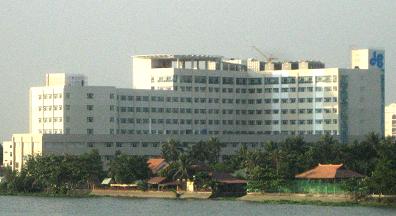
Hanh Phuc International Women and Children Hospital
In 2005, Thomson Medical also signed a consultancy agreement with the Vietnamese company Protrade Corporation (Protrade) to provide consultancy services for a private women and children’s hospital, including hospital planning, design development, project management, technical advisory services, operational resource planning and hospital commissioning.
A five-year build-and-manage agreement in 2006 was signed with Hanh Phuc International Women and Children Hospital Joint Stock Company, of which Protrade is the largest shareholder. A new hospital is being built in Thuan An district, Binh Duong province, a highly affluent region in Vietnam and a 20-minute drive from Ho Chi Minh City.
Construction is expected to be completed in the fourth quarter of year 2009. To date, the business plan for a second hospital consultancy project in Hanoi is being finalised. “We know other hospitals are trying very hard to make inroads into Vietnam, hence, we are very lucky,” comments Mr Yeo. “The potential of Vietnam is incredible, and it’s an area we intend to expand into.”
A joint venture between Thomson Medical and three established senior specialists, doctors Tay Eng Hseon (an established senior gynaecologist oncologist), Denis Cheong and Low Sze Chuan, led to the birth of Thomson Women Cancer Centre.
The objective of the cancer centre is in the area of cancer prevention – screening, diagnosis for early detection, and treatment. Originally planned to be built within the Thomson Medical complex, it was later located at Novena Medical Centre due to lack of space.
Operations commenced in February 2009. Thomson Women Cancer Centre has contributed positively to overall growth. As a result of an increased patient load and healthy patient referrals to the hospital from its clinics, revenue from its business segment of “specialised and other services” rose 23.3 per cent from $3.29 million during the same period a year ago to $4.06 million in 3QFY09. The cancer centre has strengthened Thomson Medical’s position as a specialist in women’s healthcare services.
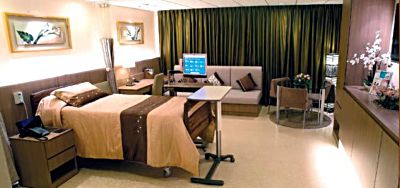
Balmoral Suite: Room 601
Challenges and Priorities
Mr Yeo has utilised the “Blue Ocean” strategy in driving Thomson Medical to where it is today. “Our team focuses on conceptualising good ideas, such that our competitors cannot catch up, so we can sail into the ‘blue ocean’ where the waters are calm. Hence, every year we challenge ourselves to come up with new ideas,” he explains.
Indeed, with the ‘Thomsonpreneur’ scheme, staff members are encouraged to contribute ideas for improvement. Thomson Medical took the initiative to come up with the First Born Incentive and Subsequent Born Incentive – programmes that provide hospital and retail partner services at member rates – even before the government came up with pro-family incentives. The famous Parentcraft programme offers instructional courses for childbirth preparation and infant care,and is held every six weeks where more than 200 couples attend.
Over the years, Thomson Medical has won an astonishing number of awards, including Singapore Prestige Brand awards for the past five to six years and Superbrand Awards in 2005 and 2006.
The biggest challenge that Thomson Medical faces going forward is space constraint. To ease this problem, the entire administrative office was transferred to another area across the hospital.
The companies’ priorities for the rest of 2009 and 2010 are people development (looking out for new people to join), facilities expansion (another two theatres are intended to be built), increasing market share, and ensuring the stability of the Vietnam projects.
Are there any plans for Thomson Medical to expand into other countries? “Partnership is crucial,” says Mr Yeo. “China is a big market but we are not familiar with it. I don’t want to jump in just because the project looks good. Vietnam is a good start for us.”
This story was recently published in Smart Investor magazine and is reproduced here with permission.




